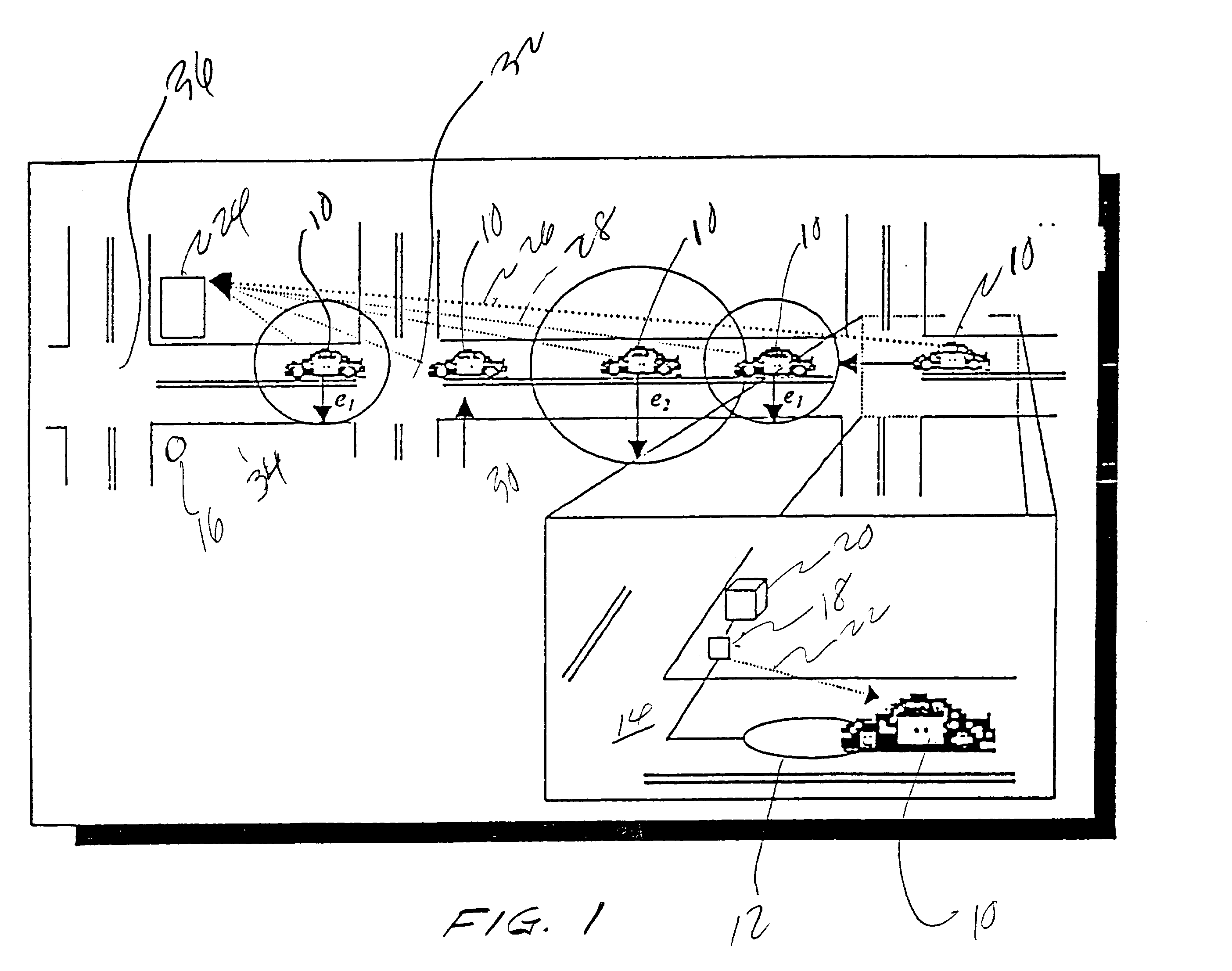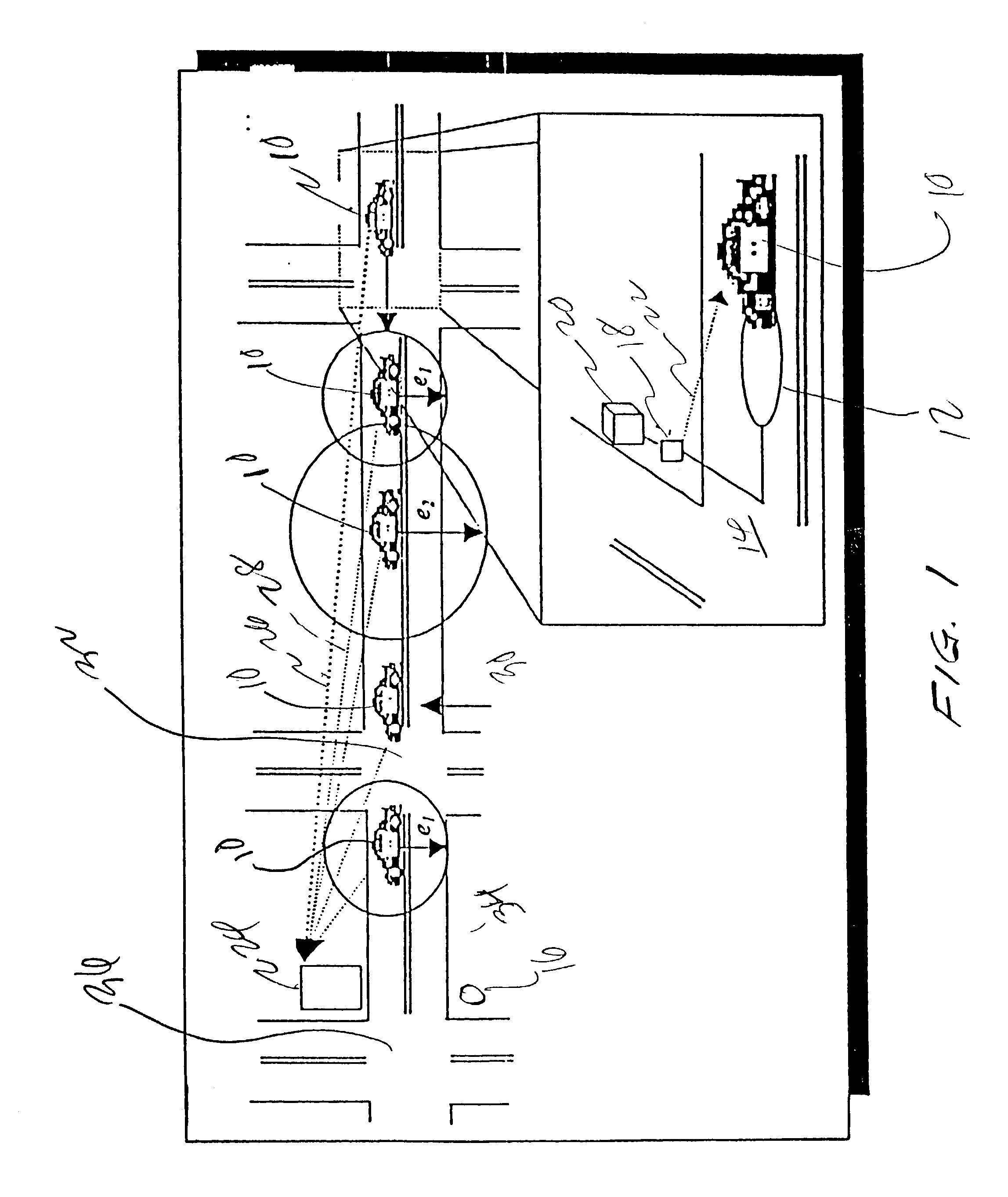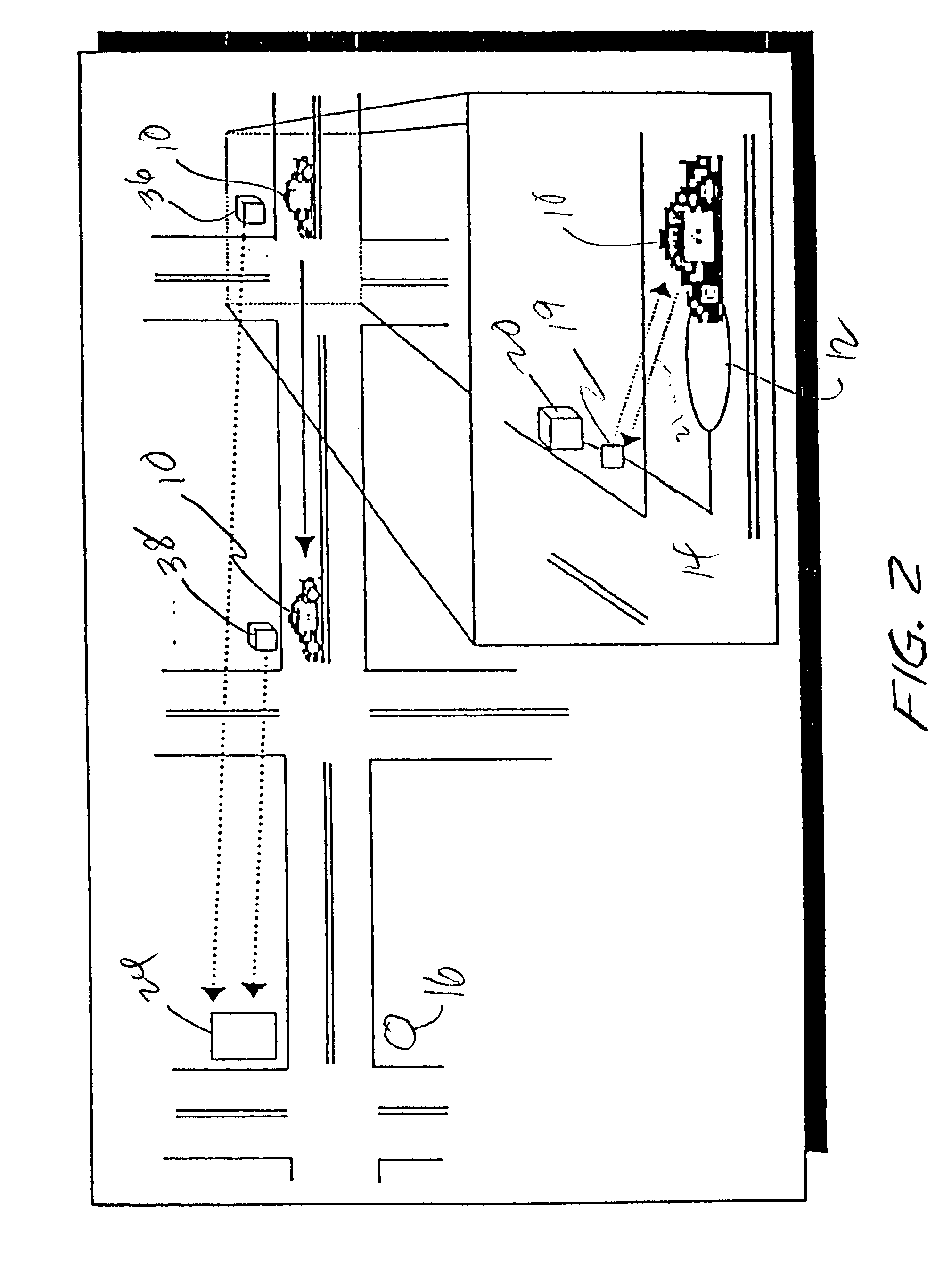Emergency vehicle control system traffic loop preemption
a technology for emergency vehicles and traffic loops, applied in the direction of traffic signals, instruments, traffic detection, etc., can solve the problems of early bias preemption, loose margins for motorists, etc., and achieve the effect of high reliability
- Summary
- Abstract
- Description
- Claims
- Application Information
AI Technical Summary
Benefits of technology
Problems solved by technology
Method used
Image
Examples
Embodiment Construction
[0037]A “car-active” traffic loop preemption using a pass-through (transmitter to normal behavior of the traffic loop) element between the traffic loop and the traffic loop control box according to the invention is illustrated in FIG. 1. This traffic loop preemption system is designed for use with the emergency vehicle warning and traffic control system such as that shown in U.S. Pat. Nos. 4,704,610 and 4,775,865 of Michael R. Smith et al issued Nov. 3, 1987 and Oct. 4, 1988, respectively and incorporated herein by reference. The traffic light preemption system disclosed herein can be used with systems disclosed there, GPS systems, or as an adjunct to any of the systems available.
[0038]As shown in FIG. 1, when a vehicle 10 travels over inductive traffic loop 12 embedded in pavement 14 of a roadway, vehicle 10 will be detected. Inductive loop 12 also activates a pass-through element resulting in RF transmission of a tag including position (in the form of latitude / longitude and direct...
PUM
 Login to View More
Login to View More Abstract
Description
Claims
Application Information
 Login to View More
Login to View More - R&D
- Intellectual Property
- Life Sciences
- Materials
- Tech Scout
- Unparalleled Data Quality
- Higher Quality Content
- 60% Fewer Hallucinations
Browse by: Latest US Patents, China's latest patents, Technical Efficacy Thesaurus, Application Domain, Technology Topic, Popular Technical Reports.
© 2025 PatSnap. All rights reserved.Legal|Privacy policy|Modern Slavery Act Transparency Statement|Sitemap|About US| Contact US: help@patsnap.com



